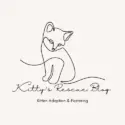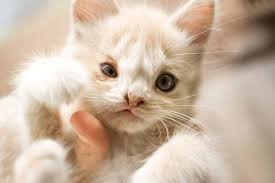Nurturing Cleft Palate Kittens: A Compassionate Approach
Cleft palate kittens require specialized care and attention from the moment they are born. This congenital condition, where there’s an opening in the roof of the mouth, can make feeding and thriving a significant challenge. However, with the right understanding, consistent effort, and unwavering dedication, these little warriors can not only survive but also live fulfilling lives. This article aims to provide a comprehensive guide to nurturing cleft palate kittens, covering everything from diagnosis to specialized care and long-term management.
Identifying a Cleft Palate
The first step in providing appropriate care is recognizing the condition. A cleft palate is a visible abnormality, although the size and severity can vary greatly. In some cases, the cleft might be small and only affect the soft palate at the back of the mouth. In more severe cases, it can extend through the hard palate and even involve the lip (cleft lip).
Common signs of a cleft palate in a kitten include:
- Difficulty nursing or bottle-feeding: Kittens with cleft palates struggle to create suction, leading to milk leaking from their nose and mouth.
- Coughing, gagging, or sneezing while feeding: This is often due to milk being aspirated into the respiratory tract.
- Failure to gain weight: Despite regular feeding attempts, the kitten may not be able to absorb enough nutrients.
- Nasal discharge: Milk or formula can easily enter the nasal passages through the cleft.
- Pneumonia: Aspiration pneumonia is a serious risk for cleft palate kittens.
If you suspect a kitten has a cleft palate, immediate veterinary attention is crucial. A veterinarian can confirm the diagnosis, assess the severity of the defect, and advise on the best course of action.
Specialized Feeding Techniques for Kittens
Feeding is arguably the most critical aspect of caring for a cleft palate kitten. Traditional nursing or bottle-feeding often proves ineffective and dangerous. The goal is to provide nutrition without risking aspiration. Here’s a breakdown of recommended feeding techniques:
- Syringe feeding: This allows for greater control over the flow of milk. Use a small syringe (1-3 ml) and slowly deliver the formula into the side of the kitten’s mouth, ensuring they have time to swallow. Avoid squirting the formula directly down the throat.
- Orogastric (stomach) tube feeding: This method involves inserting a flexible tube through the kitten’s mouth or nose and into their stomach. While it requires training from a veterinarian, it is often the safest and most effective way to ensure adequate nutrition, minimizing the risk of aspiration.
- Nipple modifications: Experiment with different nipple types. Some owners find that shortened or cross-cut nipples are easier for cleft palate kittens to latch onto.
- Positioning: Hold the kitten upright during feeding to help prevent aspiration. Avoid laying them on their back.
- Frequent, small meals: Instead of offering large meals less often, provide smaller portions more frequently (every 2-3 hours, especially in the early weeks).
After each feeding, gently pat the kitten on the back to encourage burping and clear any milk that may have entered the nasal passages. Keeping a close eye on the kitten for signs of respiratory distress, such as coughing, wheezing, or labored breathing, is critical. Proactive monitoring facilitates early intervention and prevents aspiration pneumonia or other respiratory tract infections.
Preventing and Managing Aspiration Pneumonia
Aspiration pneumonia is a significant threat to cleft palate kittens. If milk enters the lungs, it can cause a serious infection. Prevention is key. Strict adherence to the recommended feeding techniques outlined above dramatically lowers the chances of this serious condition.
If, despite precautions, a kitten develops signs of pneumonia (lethargy, loss of appetite, difficulty breathing, nasal discharge), prompt veterinary attention is crucial. Treatment typically involves antibiotics, nebulization, and supportive care.
Addressing Associated Health Concerns
Cleft palate kittens may be more susceptible to other health issues beyond aspiration pneumonia. A compromised immune system can make them more prone to infections. Regular veterinary checkups, vaccinations, and parasite prevention are all vital for maintaining their overall health.
Additionally, kittens with severe clefts might experience difficulty with dental development and alignment later in life. Orthodontic procedures might be considered as they mature.
Surgical Correction: When and How
Surgical correction of the cleft palate is often a viable option, significantly improving the kitten’s quality of life. However, surgery is typically delayed until the kitten is older and larger, usually around 3-4 months of age. This allows for better anesthesia management and a greater chance of successful tissue repair.
The surgical procedure involves closing the gap in the palate with tissue flaps. The specific technique used will depend on the size and location of the cleft. Post-operative care is crucial for successful healing. This usually involves a soft food diet, pain medication, and close monitoring for signs of infection. Multiple surgeries may be required, particularly in cases of severe clefts.
Long-Term Care and Quality of Life
Even after surgical correction, some kittens may continue to experience minor issues like nasal discharge or difficulty with food texture. Ongoing monitoring and adjustments to their diet, if necessary, can help manage these challenges effectively.
With appropriate care and, when possible, corrective surgery, cleft palate kittens can live long, happy, and fulfilling lives. They may require a little extra attention, but their resilience and unwavering spirit make them exceptionally rewarding companions.
Finding Resources and Support
Caring for a cleft palate kitten can be demanding, but you’re not alone. There are many resources available to provide support and guidance:
- Veterinarians: Your veterinarian is your primary source of information and support.
- Rescues and Shelters: Many animal rescues and shelters have experience caring for cleft palate kittens.
- Online Forums and Support Groups: Connect with other caregivers to share experiences and advice.
- Specialized Veterinary Centers: Look for veterinary centers specializing in oral and maxillofacial surgery.
By approaching the challenges of nurturing cleft palate kittens with knowledge, compassion, and dedication, you can make a profound difference in their lives and watch them thrive.

